Linux Mint, the highly popular Ubuntu-based distro, is on the verge of getting its next LTS (Long Term Support) release. Similar to the past four LTS releases, Linux Mint 20, too, will come in three editions – Cinnamon, MATE, and Xfce.
Keeping with the tradition of using female names for the LTS releases, Linux Mint 20 is called ‘Ulyana.’ It is based on Ubuntu 20.04 LTS, which is scheduled to be released on April 23, 2020.
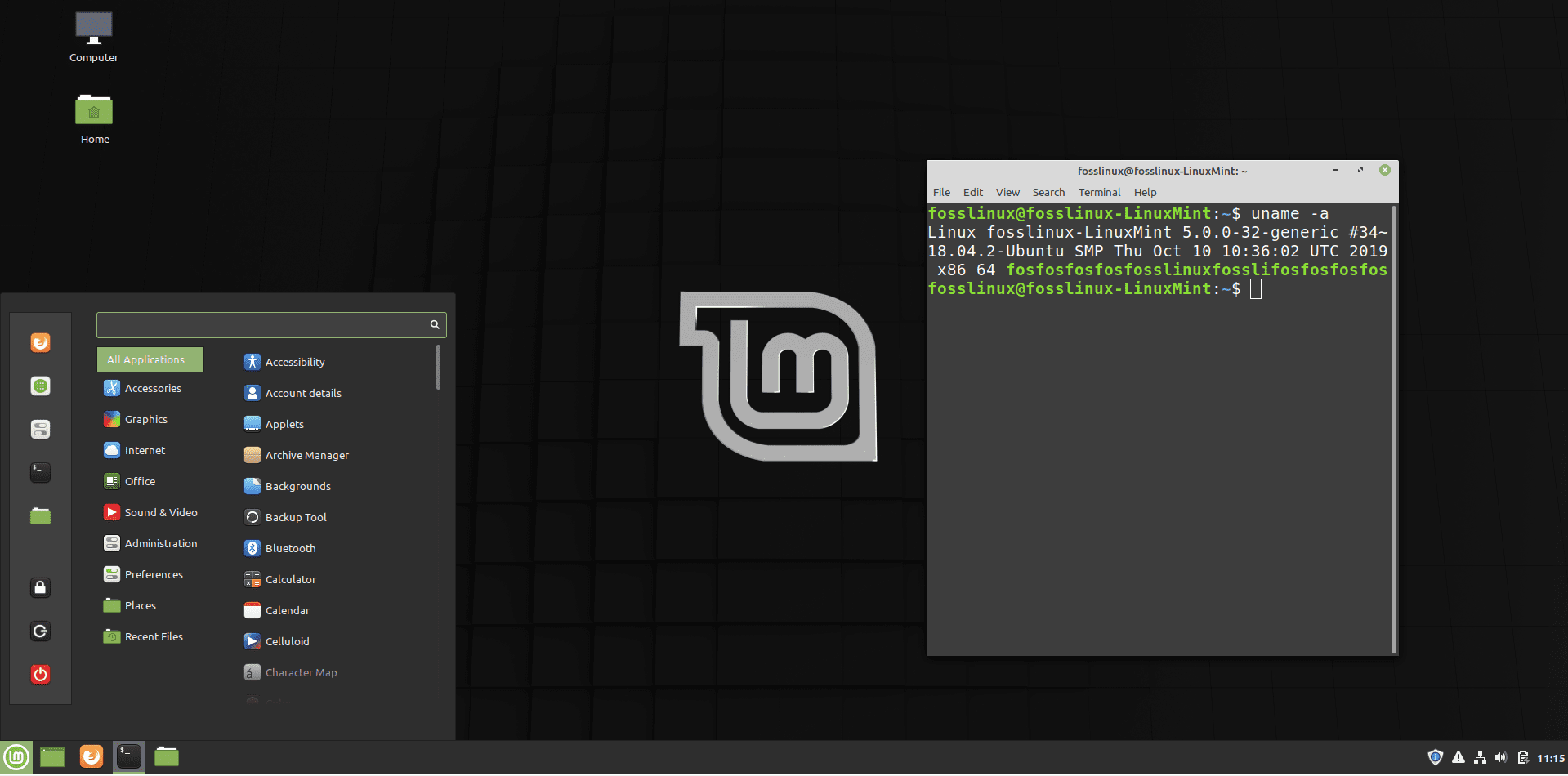
Linux Mint Cinnamon Desktop
Linux Mint 20
Unlike the previous releases, Linux Mint 20 will only be available for 64-bit machines. The current long-term support (LTS) release Linux Mint 19.3 ‘Tricia’ was released in December 2019.
For the uninitiated, LTS releases get support for a more extended period than the short-term versions. Linux Mint follows Ubuntu’s footsteps when it comes to supporting the LTS editions that will get five years of support and are considered as enterprise-grade releases. Linux Mint 19 will continue getting support until 2023, and the Linux Mint 20 will be supported until 2025.
Codename ‘Ulyana’
Ever since the very first version of Linux Mint codenamed ‘Ada’ was released back in 2006, all new versions belonging to a new series (such as 18.x or 9.x) are given feminine code names that start with the next letter of the alphabet. Every name except ‘Sarah’ for Linux Mint 18 ends with the letter ‘a,’ making the names sound pleasant to the ears.
For instance, the last 4 LTS releases of Linux Mint 19 based on Ubuntu 18.04 have been named with nicknames starting with the letter ‘T’ – Tara, Tessa, Tina, and Tricia. Naturally, it follows that the next 4 LTS releases of Linux Mint 20 will have names that start with the letter ‘U’.
Linux Mint 20 Release Schedule
The Linux Mint team does not commit to specific release dates, instead choosing to publish new versions as and when they are ‘ready.’ This way, any new critical bugs or issues that surface after Beta testing can be taken care of without worrying about tight deadlines.
When can we expect Linux Mint 20?
Since 2008, Linux Mint has been following the same release cycle as Ubuntu. From then onwards, each new release of Linux Mint was built from the latest LTS Ubuntu release. It was usually dropped around two months after the corresponding Ubuntu release.
For instance, Ubuntu 16.04 LTS and Ubuntu 18.04 LTS were released in April 2016 and April 2018, respectively. Linux Mint 18 and Linux Mint 19, based on the corresponding Ubuntu LTS releases, were dropped on 30 June 2016 and 29 June 2018, respectively.
To that end, we don’t need a crystal ball to predict the Ulyana release. Based on Ubuntu 20.04 scheduled release date, there is a high chance of Linux Mint 20 stable build availability in the last week of June 2020! Again going by the past Beta releases, Linux Mint 20 Beta will most probably be available a few weeks before the final version, sometime in the first week of June 2020.
What’s New in Linux Mint 20 ‘Ulyana’?
Let’s dive in and find out what the upcoming version of the widely used Linux distro is offering.
Only available in 64 Bit
The most unexpected change that Linux Mint 20 brings forth is the withdrawal of support for 32-Bit machines. The Linux team gave no reasons as to why they have chosen not to release a 32-Bit ISO for Linux Mint 20, but it is clear that the team’s focus is on the build that is used by the ‘majority’ of its users.
Fractional Scaling and Monitor frequency options in Cinnamon 4.6
The next version of the Cinnamon desktop environment, Cinnamon 4.6, which is expected to be built into Linux Mint 20, includes support for fractional scaling and an option to choose the frequency of your monitor in the Display Settings panel. The last release of Linux Mint, 19.3 ‘Tricia,’ was built with Cinnamon 4.4.5.
A new option to set the ‘Refresh Rate’ is added to the Display Settings screen, as shown in the screenshot below.
Presently in the Cinnamon desktop environment, there are only two scaling modes – 100% (normal mode) and 200% (HiDPI mode). Also, the same scaling is applied to all monitors irrespective of its resolution.
Fractional scaling will fix this problem by allowing you to set the scaling for each monitor independently. Also, it lets you set scaling to 125%, 150%, and 175% in addition to the already existing 100% and 200% options. With these new options, the Linux Mint team hopes to get higher pixel density that allows HiDPl and non-HiDPI monitors to get along with each other.
Performance Improvements in Nemo
Nemo is the default file manager of the Cinnamon desktop environment. A small tweak to the way thumbnails are generated in Nemo is expected to bring in a noticeable improvement to its performance.
At present, Nemo loads the thumbnails at the same time as it loads up the directories and their contents. This is called asynchronous rendering and is used to give a smooth UI experience.
But in cases involving massive I/O and slow hard drives, such as when moving large video files to external drives, asynchronous loading of icons makes things worse. So, a user navigating directories and browsing its contents in Nemo might sometimes experience a lag.
With upcoming changes in Nemo in Linux Mint 20, this lag will be fixed by delaying the rendering of thumbnails. The trick is to load the directories with generic icons first, and later render their assigned thumbnails. The performance improvement because of this fix is quite pronounced, as per the Linux Mint team.
Warpinator
A new tool to share files securely across local networks is still in the works and is awaited in the upcoming Linux Mint 20. The team has not finalized the name for the tool, so feel free to share your suggestions on their blog page.
Mint-Y Theme for Cinnamon gets new colors
The popular Mint-Y theme will be available in two new colors, Aqua and Pink.
NVIDIA support
Linux Mint 20 will feature enhanced support for NVIDIA Optimus. The new NVIDIA prime applet shows your GPU renderer, and you should be able to select the card to switch from its menu. Doing this, Linux Mint joins the likes of other distros such as Ubuntu MATE, Pop!_OS, which already have such applets currently.

Nvidia applet
Optionally, you can run on-board Intel graphics during all times to save laptop battery life and switch to the on-demand option “Run with NVIDIA GPU” when needed for particular graphics-intensive apps. The feature is now fully supported both in MATE (by mint menu) and in Cinnamon (by the Cinnamon menu applet). It’s that simple to switch!
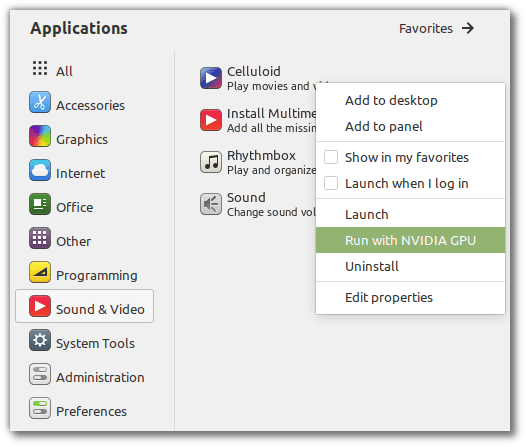
On-demand Nvidia Usage
Conclusion
Linux Mint 20 is a significant release worth waiting for. We will keep you posted on the updates and will cover its upcoming Beta release, which is expected in a few weeks, around the first week of June 2020.
Meanwhile, you can take a look at the important features and updates of Ubuntu 20.04, the upstream distro on which Linux Mint 20 is based. We have already covered Ubuntu 20.04 LTS here.


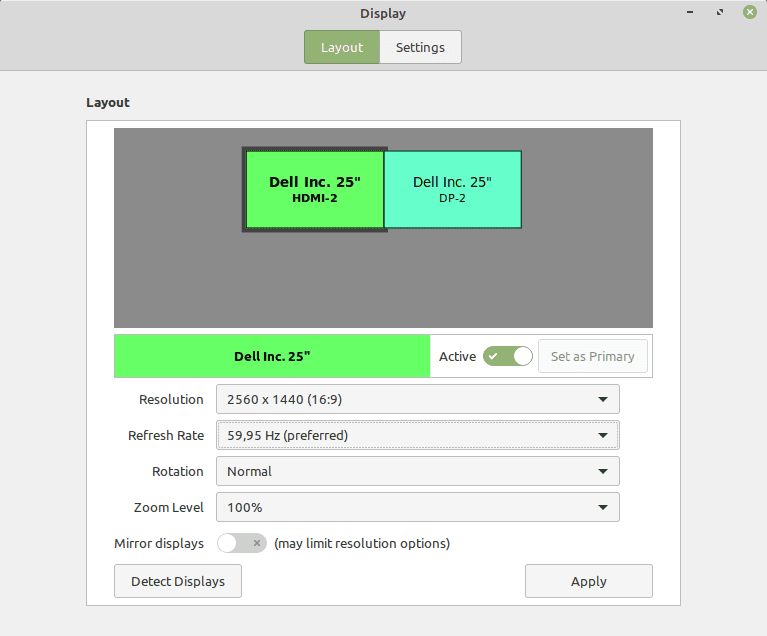
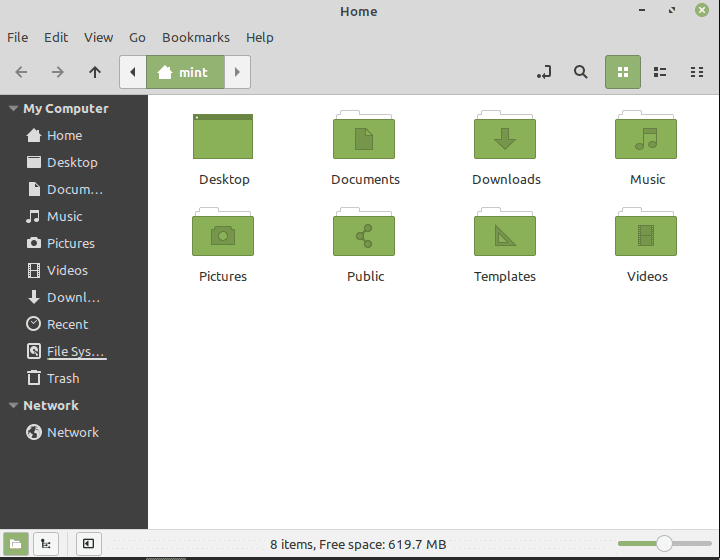

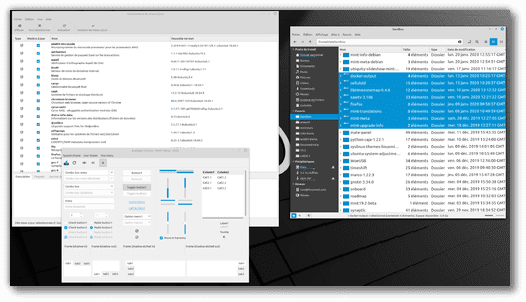
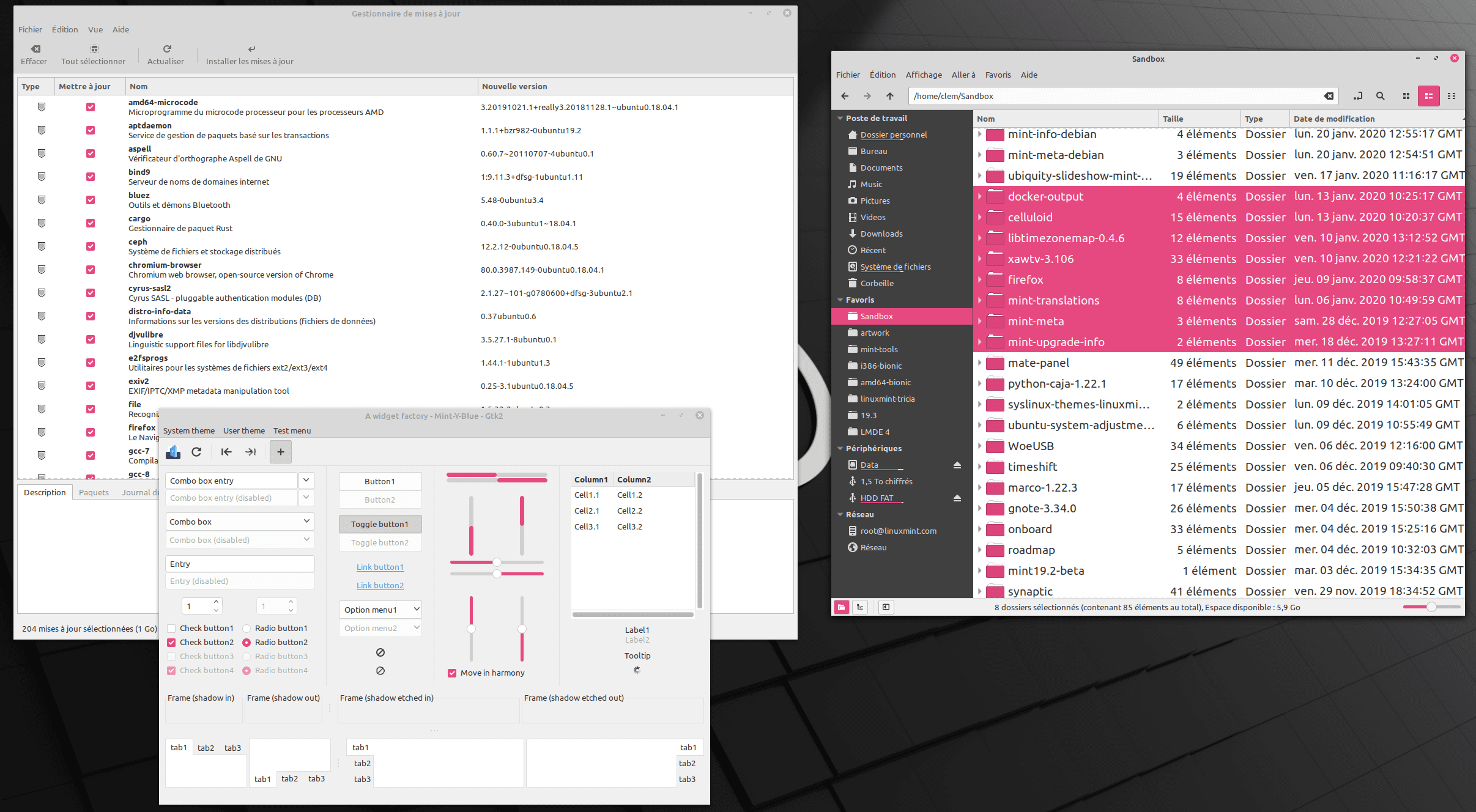
1 comment
is Linux Mint 20 a Live OS like TAILS? and can you compare it to TAILS?